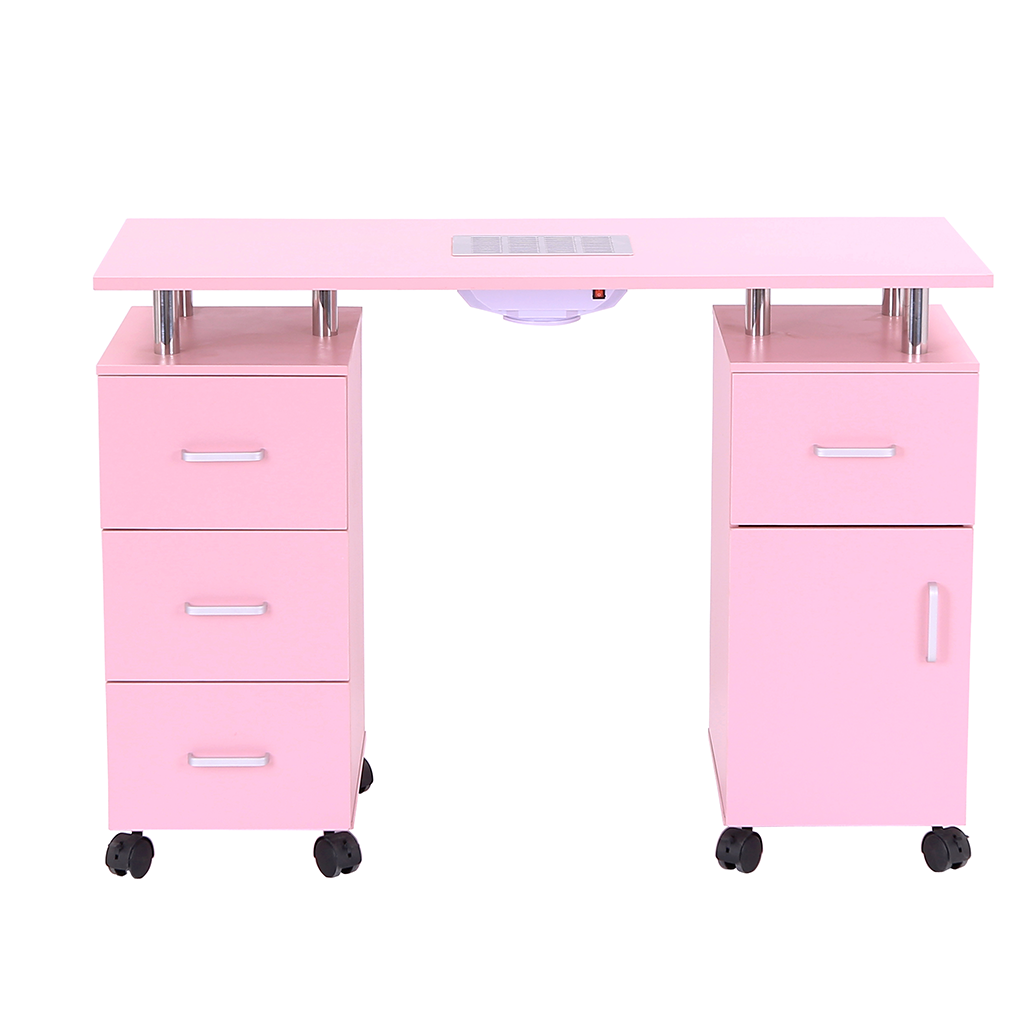Choosing a Nail Desk for Maximum Comfort
Consider the Height of the Nail Desk
The height of a nail desk impact the comfort of the nail technician the most. A desk that is too high can cause shoulder and neck strain whereas a desk that is too low can lead to back pain. Nail desk height is best set to the elbow level so the technician can sit comfortably with their arms relaxed at their sides.
Technicians can vary the height of a desk ranging from thirty to thirty-four inches attains maximum comfort. Adjustable height desks can be set for a variety of body sizes and for different types of work. For deep-focus nail art, a lower desk provides greater comfort. When a technician prefers to work on a client’s hands while standing, the desk can be adjusted to a higher level to avoid excessive bending. Nail desks with adjustable height settings can accommodate a variety of technicians as well as a myriad of working styles, reducing thelikelyhood of body discomfort over extended periods of working.

The surface area on a nail desk impacts the comfort level of the work as well as the efficiency.
A nail desk that is small poses a problem as important items like nail polish bottles, nail files, scissors, and lamps become overcrowded and can be misplaced. This can lead to technicians reaching items that are not organized, which adds on to discomfort.
A good nail desk should not only accommodate necessary equipment, but should also be organized enough to leave space for the clients' hands. A dimension of 48 to 60 inches and a depth of 24 to 30 inches is usually enough. Also, the layout should include dedicated areas or sections. For instance, many desks come with structured polish racks, small, organized drawers with tools, or a compartmented space for a nail lamp. Techs don't have to twist or stretch to grab the tools. The organized and rigid surface also means the client and the technician can have a comfortable working experience.
Check the Material of the Nail Desk Surface
Comfort and practicality are heavily influenced by the surface material of the nail desk.
Different kinds of nail work require tools such as nail polish removers, acetone, and glues which in one way or the other can ruin some surfaces. Having an easy to clean surface and resistant to such liquids will go a long way in improving ergonomic comfort and in saving time and frustration.
Common nail desk surfaces tend to include laminate, stainless steel and solid wood with a protective coat. Laminate is the surface of choice because of its affordability, different colors and ease of cleaning. Stainless steel, while a little bit colder, is the best surface as it is highly resistant to anything chemical and won’t wear down. Solid wood with a waterproof and chemical resistant finish is a middle ground that adds a warm look and it will restrain a lot of the wood finish from being scuffed, so it will just require a bit more care. While ergonomics is all about using surfaces that enhance ease of work, a nail desk surface will need to be smooth to enhance comfort and ease of use.
Design and assess the ergonomic comfort that comes with using a desk.
This is where the desk is set up in such a way as to accommodate the body of the user. Having a nail desk where the ergonomics have well been taken care of will enhance comfort a great deal.
An important ergonomic aspect is the desk edge. A desk with rounded or padded edges prevents the technician’s forearms from resting on a sharp edge, the edge of the desk. This is very uncomfortable, especially after a few hours of work.
A. Other ergonomic considerations include the desk clearance. There needs to be enough space so the technician can sit comfortably without hitting their knees on the desk. If the desk is equipped with drawers or cabinets beneath it, those accessories need to be positioned in such a way so the clearance is not obstructed. Some nail desks include a pull out shelf located on a lower surface, intended to accommodate the client’s feet, or a padded armrest designed to support the client’s hands. These thoughtful considerations enhance client comfort, which helps the technician work better. Focusing on the ergonomic principle of designing a nail desk helps optimize comfort for both the technician and client during the nail service.
Additions on nail desks increase the comfort level and transform the work into a more pleasant experience. One of the features is built in lighting. Adequate illumination is a standard requirement during nail work. It helps the technicians focus on the little details with ease.
A nail desk with led lights below the surface or around the edges offer bright light evenly distributed, ensuring no glare, lowering eye strain, and enabling precision work for the technician.
Another useful aspect are the the storage options. On the one hand, with the tools organized, stress is relieved, and on the other hand, additional storage options such as deep drawers, shelves or side cabinets, are within reach for easy access. Some nail desks include a built in fan which serves the purpose of removing the plumes coming from the nail polish and the remover. These plumes can be discomforting and cause headaches, but the fan purifies the air and promotes better working environment. Also, these desks come with wheels so their easy repositioning is a bonus, especially when the salon's layout changes. These concluding additional aspects prove the desks are not only designed to meet the basic needs but offer maximum comfort to daily users as well.




